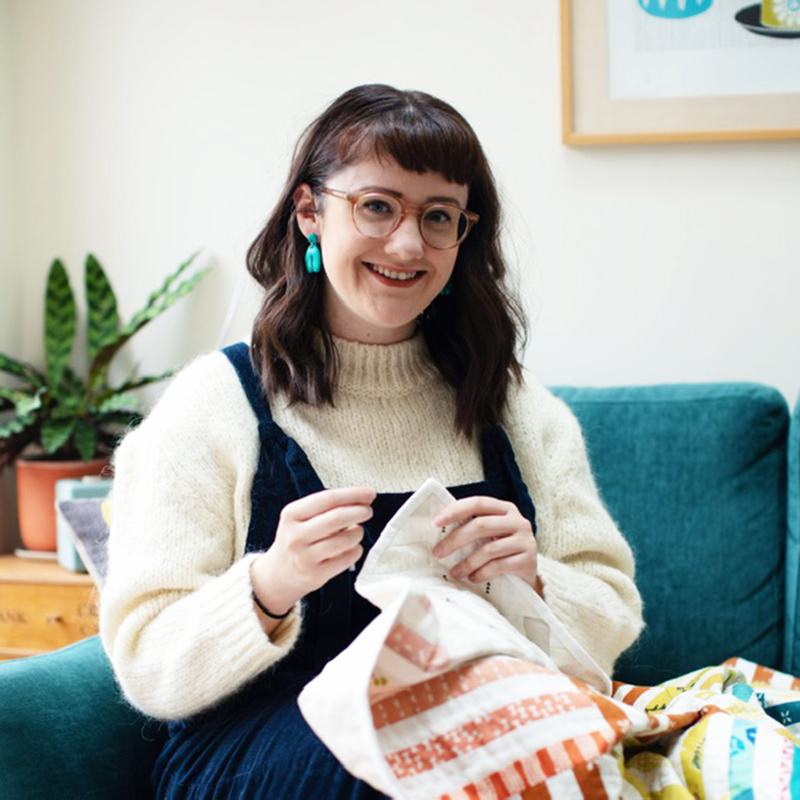Recently started on your quilting journey? We're here to help you up your game when it comes to machine quilting your patchwork! It can be daunting to know where to start – what threads should you use? which patterns to aim for? We’ve put our collective successes and learning lessons to good use to bring you a one-stop list of tips for machine quilting, from long arm to free motion quilting tips and everything in between. Dive in and up your game!
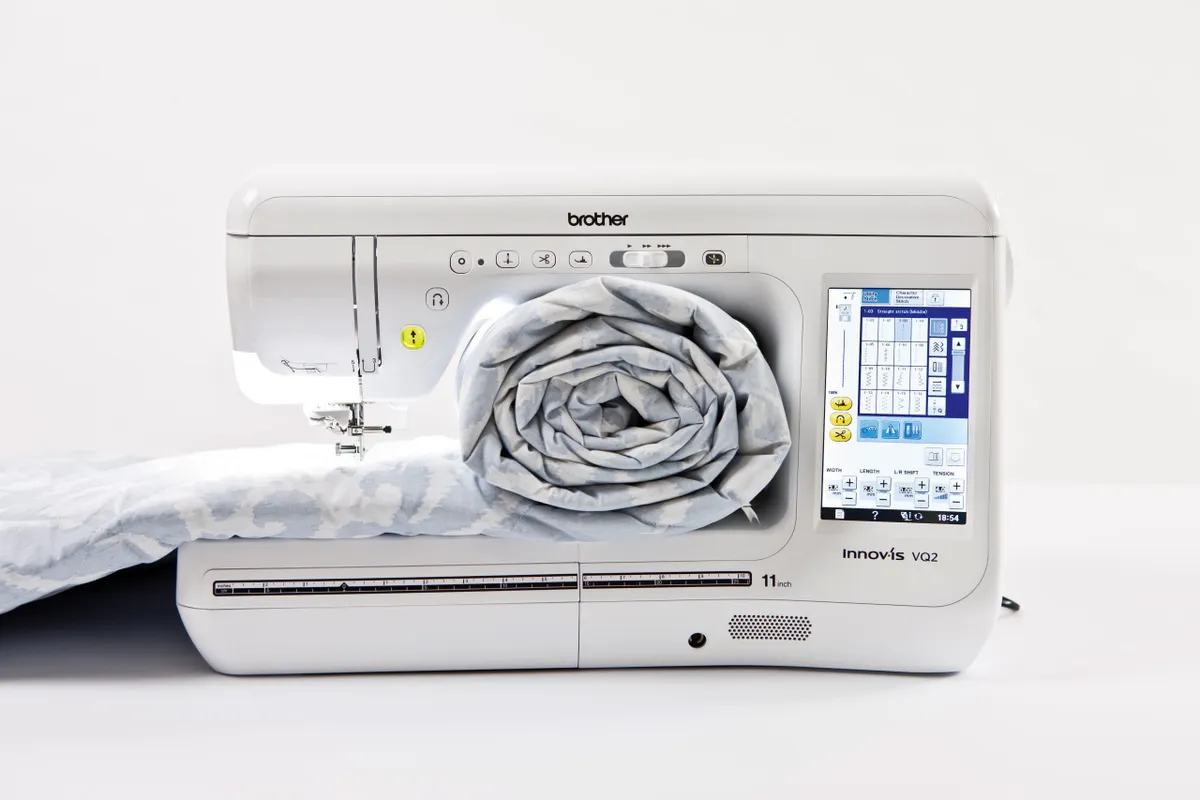
On the lookout for a new sewing machine? Find a suitable fit for your sewing needs in our guide to the best sewing machines.
Top tips for machine quilting
Start simple, start small
If you’re a newbie to the quilting world, you don’t want the first project you tackle to be a king-size quilt. Kick off your quilting experience with little projects – think cushions, coasters or table runners – and opt for simple, straight line quilting designs whilst you get used to the process. How about this easy patchwork cushion?
Press well beforehand
Your quilt top is likely to get crumpled with use whilst you piece it together – it’s almost inevitable! Give the quilt top, backing fabric and batting (yes, really) a good press before basting to help make sure that everything lies flat. It’ll make the next stage a whole lot easier…
Baste well
The last thing you want when quilting is puckered fabric. Take the time to baste your quilt sandwich well to make sure that all three layers glide through the machine smoothly. A large table or flat surface and a little patience are the best tools to achieve this easily. If you're brand new to quilting, check out our guide to find out How to make a quilt.
Looking to upgrade your machine?
If you want to buy a new machine or treat yourself to a newer model, Brother have everything you need! To explore their full range of machines, head to the Brother sewing machines website.
Spray baste
This one is often up to personal preference, but we like to spray baste our quilt sandwiches. This way your layers are less likely to shift and there are no obstacles (such as pins) in the way when all you want to do is quilt a simple straight line without interruption.
Use a Hera marker
There are many ways to mark your quilting lines before you start sewing – one of the most popular is to use a Hera marker. Use the blunt tool to crease lines in the quilt sandwich and quilt along those markings. When you’re done quilting there will be no annoying lines to worry about removing and your stitches will be perfectly straight!
Clean your machine
Before you get started, make sure to give your sewing machine a good spring clean. Take it apart, remove the bobbin case and use a sewing machine brush to remove any lint and fluff that may slow your machine down. An unclean machine can cause your stitches to skip or become uneven, so you’ll want to reduce the chances of this happening to your precious quilt. Have a look at our beginner's guide to How to clean a sewing machine.
Change your needle
The general rule of thumb is that you should change your needle every 3 full bobbins or at least once every project. Make sure your machine has a nice, fresh needle before you get quilting for perfect and professional stitches.
Maximise your workspace
If your sewing machine has an extension table, make the most of this to hold some of the weight of your quilt. It’ll make working with larger projects a lot easier and less strenuous for your arms and shoulders. For bigger projects, a desk with space to the left and behind your machine is a must!
Press the backing seam open
If your quilt is bigger than the width of fabric, it’s likely you’ll have to piece your backing fabric together. Press your seam open – instead of to one side – to reduce bulk if it falls in the same place as some of your patchwork seams. It’ll make it easier to quilt over, too.
Go slow
Don’t rush the quilting process – slow and steady wins the race! Sewing at a medium pace will ensure your stitches are even and your fabrics don’t pucker under the pressure of your walking foot. You may have to dial up the patience levels but it’ll be worth it. If you're serious about upping your quilt skills, head over to our sister article - 8 of the best sewing machines for quilting.
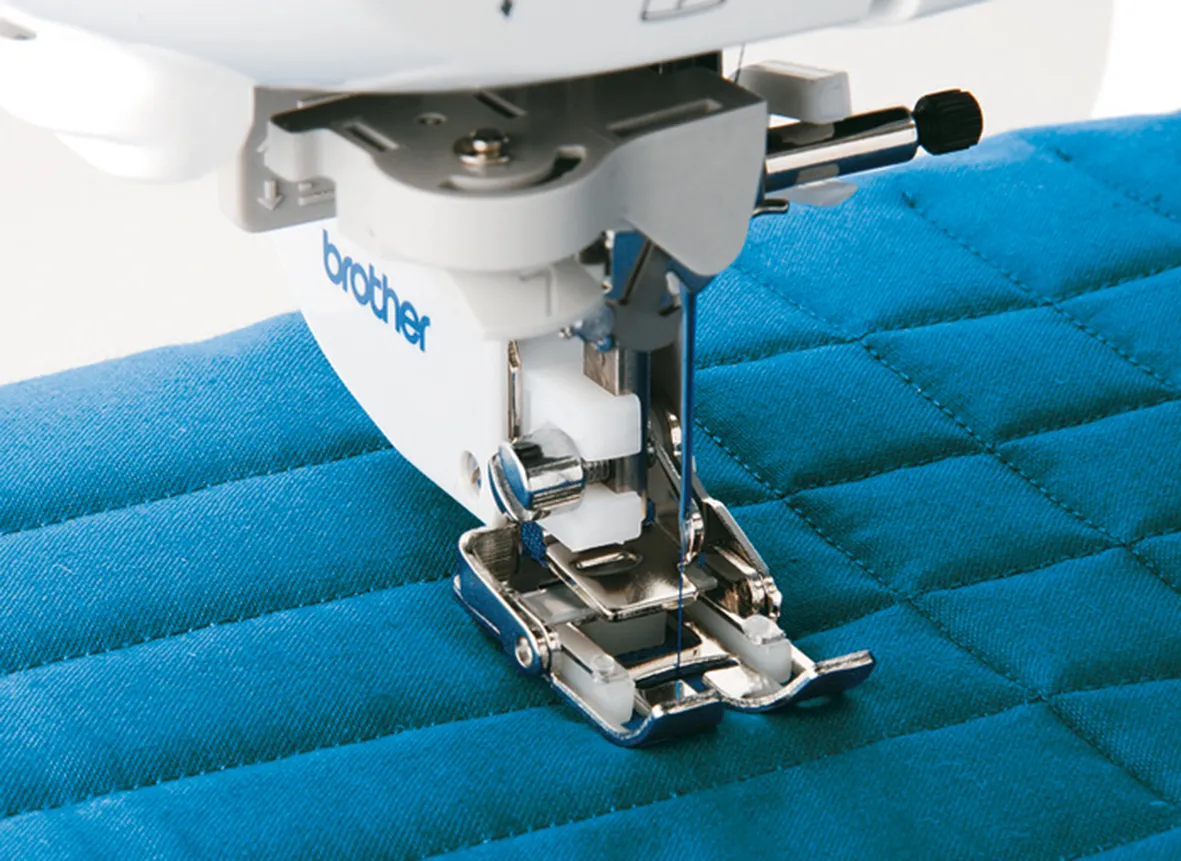
Match your thread and needle
Pick a thread weight that goes with the size of your needle. Quilters often use 50 weight threads, which should be paired with 80/12 needles, and 40 weight threads, which should be paired with 90/14 needles. As a side note, the thinner your thread the more it’ll blend into the quilting, and the thicker the thread the more it’ll stand out. For more on this, check out our guide to sewing machine needles.
Bold or subtle?
Decide if you want your quilting to pop against the patchwork or blend in to provide subtle texture. If you want the quilting to be a key feature, pick a bright colour that stands out against your patchwork. If you want something more low-key, match the thread with the lightest fabric you have in your quilt.
Colour coordinate
If you’re not super confident with your machine yet, hide any potential tension issues by matching your top thread and bobbin thread. That way, if you can see either from the other side of the quilt you won’t be able to tell!
Do a test run
Make a small quilt sandwich to test out the tension, pressure and stitch length before you quilt the patchwork you’ve just spent hours sewing together! This is a good way to practise the style of design you want to go for, and get you into the right mindset for a full quilting session.
Go for prints
If you’re a newbie to the craft or aren’t the most confident quilter, use prints for the patchwork and the backing fabric. Busy fabrics will hide any mistakes much more than bold solids will… you’re sure to be grateful when some of the pressure to be perfect is taken off your shoulders!
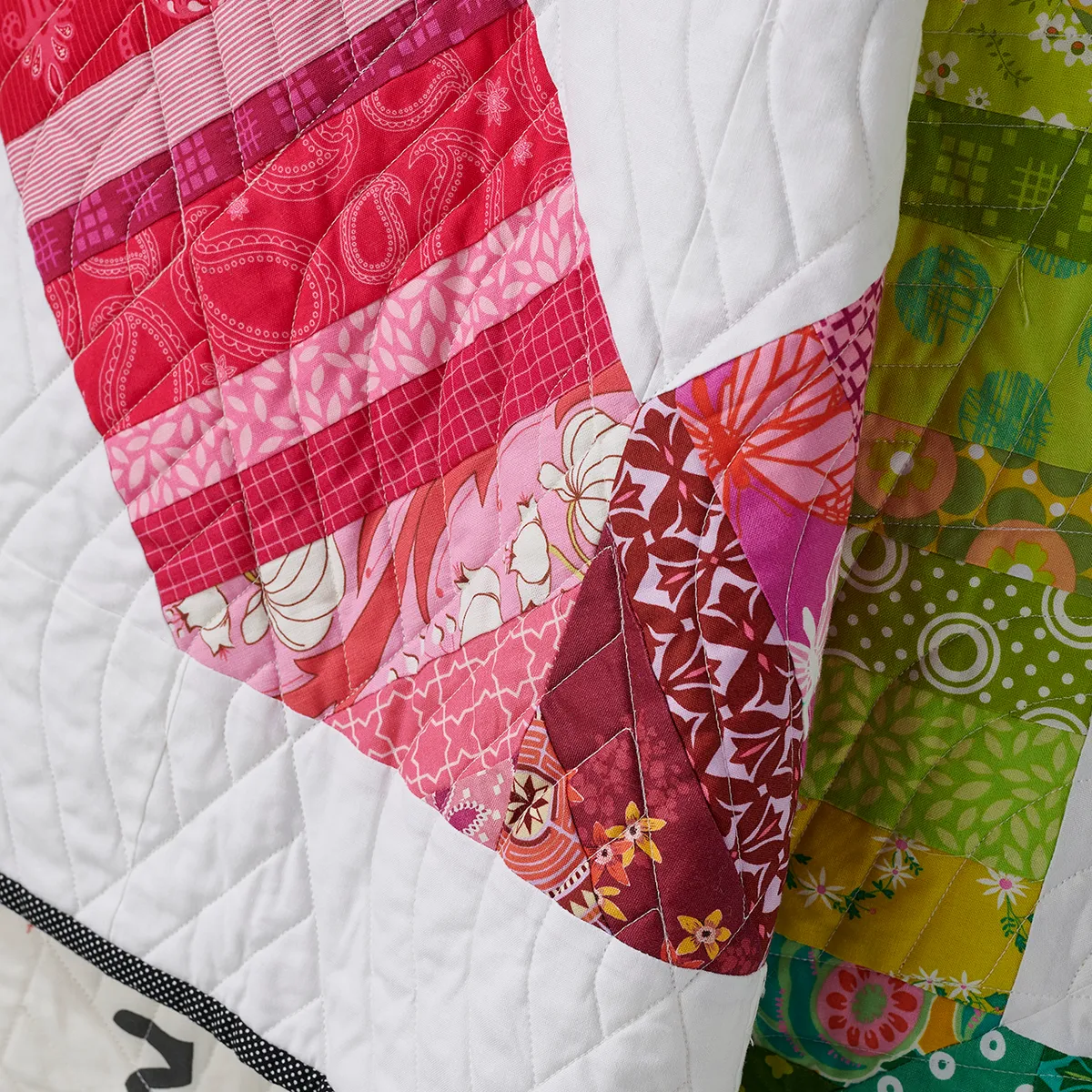
Practise free motion quilting
You know what they say – practice makes perfect! And believe us, they’re not wrong. Regardless of whether you’re going for walking foot or free-motion quilting, the more you do it the better you’ll get. Why not practise your quilting on some small projects to give away to friends and family?
Stitch in the ditch
Whilst you’re still new to quilting, stitching in the ditch is a great way to get comfortable with your machine. No need to mark out your lines beforehand, just follow your seams with your walking foot and sew along it as you go. Your quilting lines will be less visible than if you went over the seams, taking some of the stress of the process away from the experience!
Use the right feet
Many sewing machines come with lots of different feet attachments – make sure you’re using the right one for the style of quilting you’ve chosen. For straight line quilting use a walking foot. It’ll make sure your fabrics shift as little as possible while you sew. For free-motion, go for a quilting or embroidery foot – the wide gap and often clear plastic will help you see exactly where you’re sewing.
Start in the centre
As well as you may baste your quilt sandwich, sometimes a little shifting is inevitable. Start quilting from the centre and work your way outwards. That way, any fabric will shift towards the edge of the quilt so you can adjust as necessary, rather than getting bunched in the middle.
Sew in the same direction
Following on from the above tip, sew your quilting lines in the same direction, particularly if you’ve chosen to do matchstick or straight line quilting. You’ll notice if you sew in alternate directions that the fabric may pull each way, causing tension waves across the quilt. It’ll create a lot of texture, but not the type that you’re looking for!
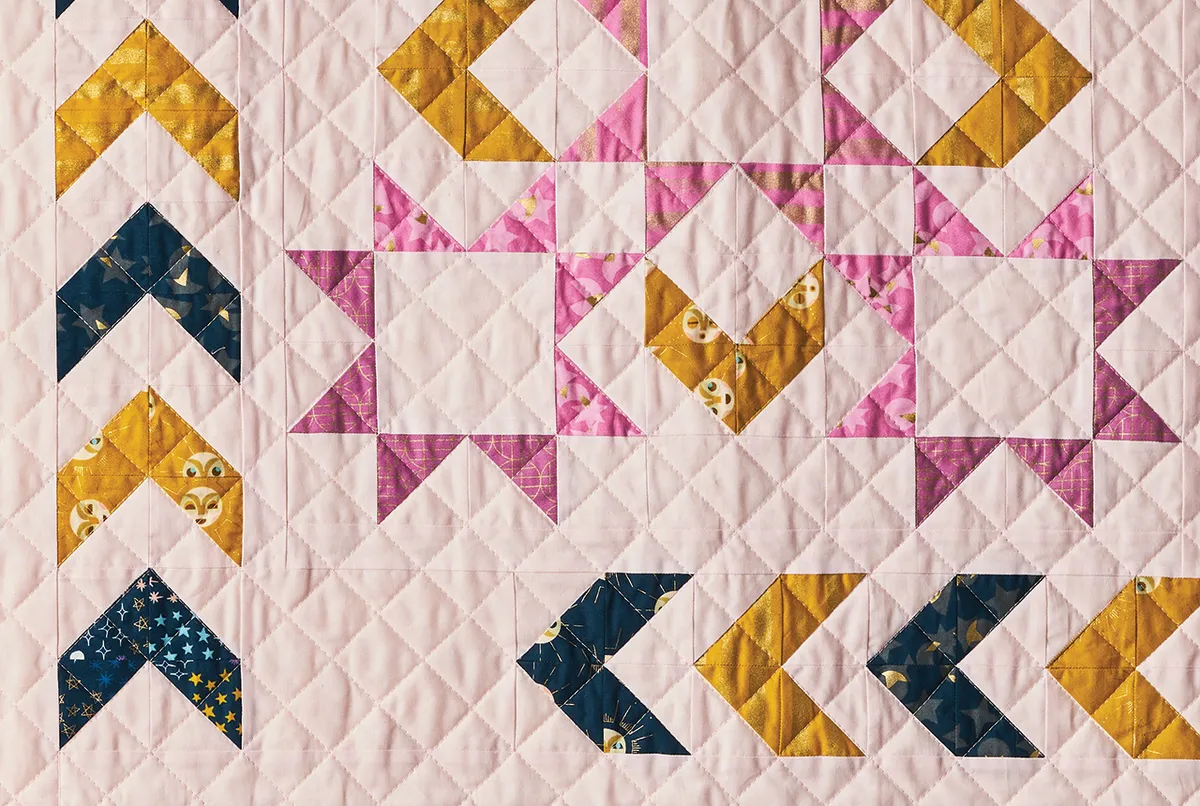
Select your designs
The success of a quilt is often down to the quilting design. If you have a busy quilt full of print fabrics and fussy cutting, a complex, swirling, longarm quilting design may get lost. However if you’ve used mostly solids, something a little more detailed will finish off the quilt beautifully. For free-motion quilting on your domestic sewing machine, why not turn to stencils to find a design that’s a little different from your standard straight lines? If you’re using a longarm sewing machine, there are lots of exciting pantographs that you can choose from!
Drop your feed dogs
It may seem obvious, but if you’re free-motion quilting on your home sewing machine, remember to lower the feed dogs! It’ll stop the machine from feeding the fabric through the needle in a straight line and will allow you to move the quilt in all directions to create the prettiest quilted patterns.
Set the needle down
Many machines come with the option to set your needle down, so that every time you stop and start the needle is down in the exact spot that you stopped sewing. This means that you’ll never lose where you were… no more skipped stitches or going back on yourself!
Accessorize right
They may not be the most fashion forward option for your wardrobe, but quilting gloves sure make your life easier! Little grips on the palms help to grasp the quilt as you move it through your machine, and help to prevent your mitts from getting too sore and achey. We think they’re a must.
More is nearly always better
In patchwork, modern quilters often opt for the less is more mentality, but when it comes to quilting more is nearly always more. Done all the quilting you’d planned but still aren’t quite sure? Add more! There’s nothing better than that irresistible texture of a densely quilted quilt, so keep going and see where it’ll take you.
Bury threads in centre
If you’ve quilted a design that requires you to stop and start in the centre – or you ran out of your bobbin thread halfway through – make sure you’re burying your threads for a neat and professional finish. Instead of snipping the ends off, leave a long tail so that you have plenty to work with and use a hand needle to sew the end under the quilt top so that it’s nicely hidden.
Take regular breaks
If you’re sat quilting for a solid few hours, chances are your back and shoulders are going to be hurting for a while! Loosen any tension in your shoulders whilst you work and award yourself regular breaks to keep yourself feeling nimble. As much as you may want to just get the quilting done, your back will thank you for it later.
Experiment
Don’t confine yourself to just one quilting style – research different techniques and don’t be afraid to try your hand at them! Fancy having a go at a free-motion stippled effect? Pop a quick quilt sandwich together and see what it’s like. Considering fancy free-motion flowers? Test it out! The only way your quilting is going to improve is by flexing your creative muscle and expanding your repertoire.
Enjoy the process
It goes without saying, really. Quilting is something that we all do for fun, so enjoy the process. It’s easy to want to rush through the quilting stage to get to the end goal of a finished quilt, but we recommend putting some music or a podcast on, getting yourself comfy and relaxing into the repetitive motion.
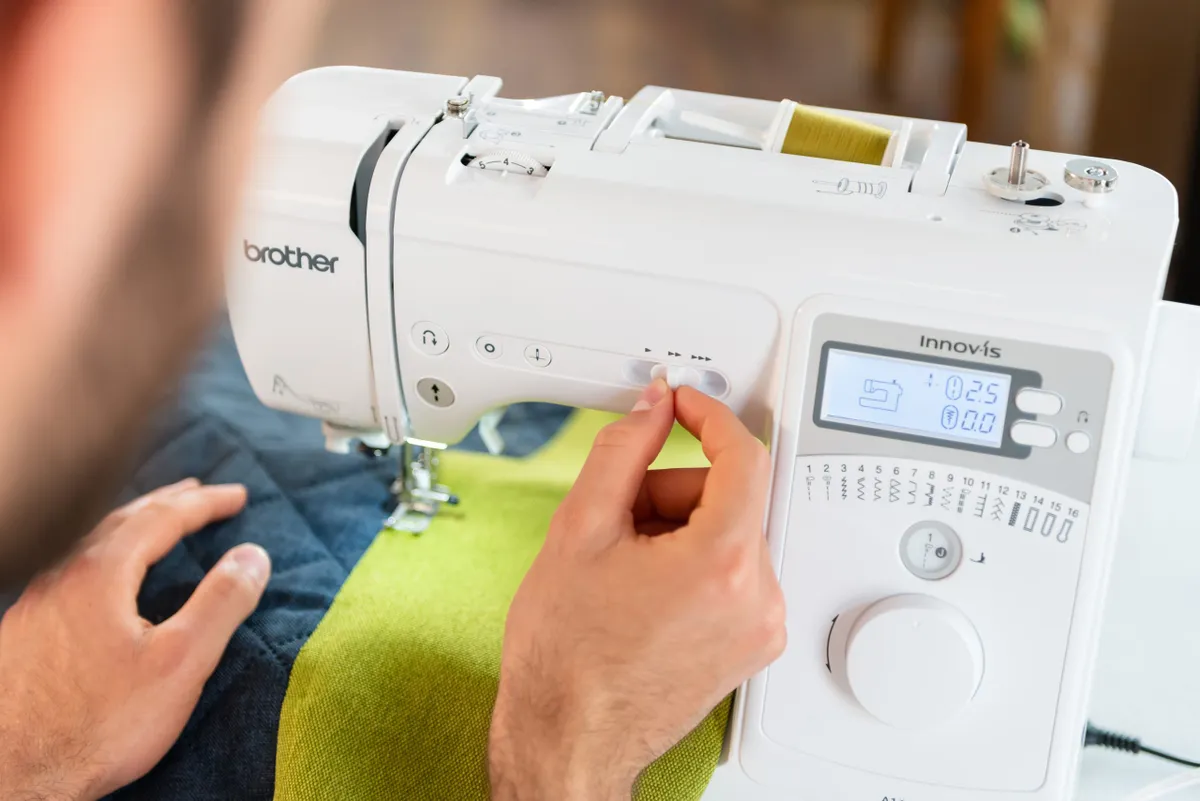
Improve your quilting with our tips
Following these tips will not only help you improve your quilting but it'll make you feel more confident too!
Whether you're passionate about free motion quilting or love to make patchwork, our tips will help you make the most of your machine.
Now you have the knowledge all you need is a project to work on!
Discover more quilting inspiration with Gathered
It's time to put your new quilting skills to the test. Head over to our contemporary patchwork quilt pattern and stitch yourself a new quilt!
